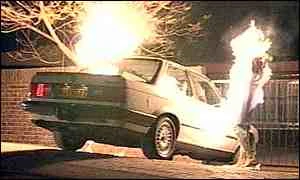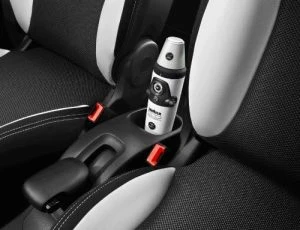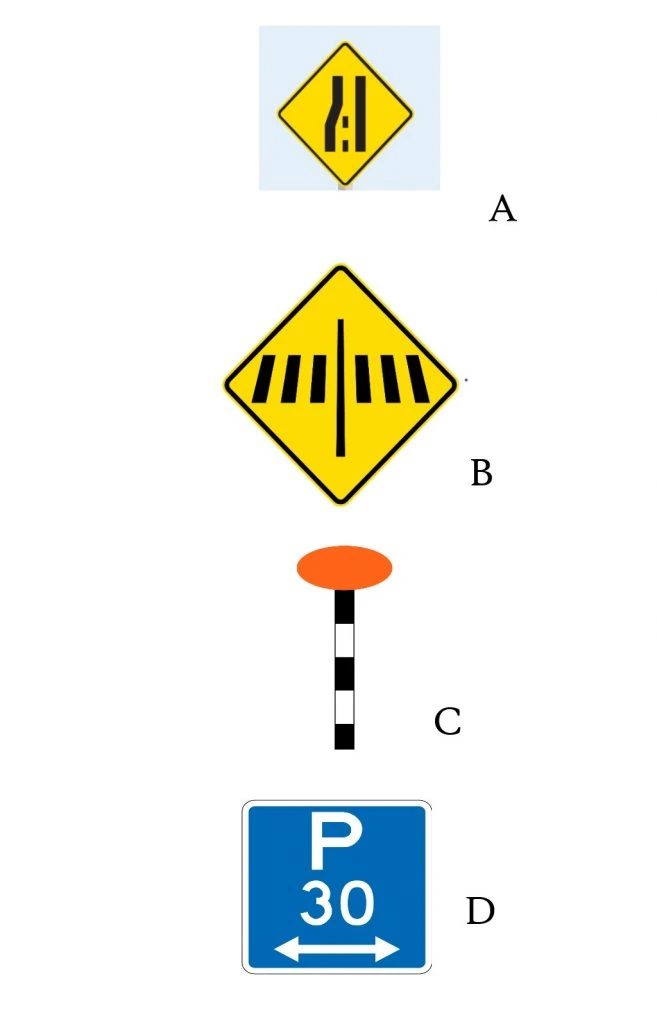Weird Stuff
Silly Features That Never Made It

In most modern cars, you can find a selection of neat features to make the task of driving easier and more pleasant. Some of the ones I particularly like include active cruise control, ambient lighting, steering wheel mounted audio controls, reversing cameras and Bluetooth connectivity so my phone and car talk to each other. I guess most of us have our favourite driver aids.
However, over the over 100 years that the car has been around, manufacturers and designers have come up with some features that flopped, mostly because they were plain silly ideas. We’re not talking about things that have been phased out because they are no longer in high demand, such as cigarette lighters (which have morphed into 12-volt power outlets), or because they were a bit iffy in terms of safety (such as bench seats). Instead, we’re talking about ideas that were totally nuts. Here’s the looniest ones that were put forward by designers with a straight face.
In-Car Toilets
In the late 1940s, an inventor named Louie Mattar customized his Cadillac so that he could go on a long-haul trip of around 6000 miles without stopping, even to refuel. While most of us would be more interested on how you manage to get something that goes for that long without refuelling, which wouldn’t be silly, quite a few designers in the 1950s considered installing one of the other things that Mattar put in his customized car: a toilet. Yes, a toilet that the driver or passenger can use without leaving the car. However, this proved to be impractical, considering how easy it is to simply pull over at a public loo, or café or garage – or, in remote and rural areas, a handy bush.
Flamethrowers

Yes, seriously. In the late 1990s, when violent crime was a real problem in Johannesburg, South Africa, one inventor decided that the best way to protect drivers from carjackings was to install aftermarket flamethrowers that could be activated in self-defence. This was designed to use gas to create a fireball that didn’t damage the paint. The laws at the time allowed South Africans to use deadly force in self-defence, and the fireballs sent out by the “BMW Blaster” weren’t lethal; they “merely” blinded the would-be carjackers. The downsides were that (A) a matching fireball was released from the opposite side of the vehicle, potentially injuring innocent bystanders and (B) flamethrowers have been outlawed by the United Nations. The invention won the Ig-Nobel Peace prize for 1999 and the rumour is that 25 BMWs received this “upgrade”.
http://news.bbc.co.uk/2/hi/africa/232777.stm
Children’s Partition
Another one from the 1950s, back when rear seatbelts (and possibly seatbelts full stop) weren’t really a thing, and kids who monkeyed around in the back seat while the car was moving were threatened with “Don’t make me stop this car!” Some designers thought that perhaps it would be less distracting (and pleasant) for the driver to ensure that the children were neither seen nor heard, courtesy of a privacy partition of the sort found in very posh limousines. However, most parents preferred to know if their kids were screaming, fighting or giving each other black eyes in the rear seat, so this idea didn’t catch on.
Automatic Seatbelts
This one’s from the 1970s to the 1990s when more automatic features were becoming popular. One that didn’t catch on was the automatic seatbelt. An automatic seatbelt worked by taking the shoulder strap from the back of the seat and fastening itself onto the B-pillar when the engine started or the door closed. The user had to buckle up a lap belt him/herself. This idea was very exciting, and in 1977, a law was passed in the US that stated that by 1983 all new cars should either have automatic seatbelts or airbags. The first commercial vehicle to have these automatic seatbelts was the 1975 Volkswagen Golf, and many other manufacturers had offerings with this safety feature, including Hyundai and Toyota. However, the downside was that a seatbelt that isn’t permanently fixed to the B-pillar isn’t as secure as one that is, and users still had to clip in the lap belt separately. They also didn’t play nicely with child seats and were a pain for getting in and out if you were carrying anything. As someone with long hair that occasionally gets pulled into the slot of ordinary retractable inertia seatbelts, I imagine that these automatic seatbelts would have been a right pig for people with long hair. So airbags were the safety feature that won out.
If anybody has experience of a vehicle with an automatic seatbelt, let us know in the comments what you thought of them!
Joystick Steering Systems
Although the original horseless carriages of the late 19th century sometimes used a rudder system rather than a wheel, the steering wheel has become the one we’re all familiar with. However, during the 1990s, Saab decided to fit its some of its 9000 models with a joystick steering system. Fortunately, not all Saab 9000s had them and plenty had the ordinary wheel. The joystick was too easily knocked and wasn’t precise enough. This was particularly an issue, given that the Saab 9000 was pretty responsive when you put your foot on the accelerator (I used to own one, and I rather miss the way that it could dart into the gaps at the intersections like a hummingbird spotting a tasty new flower…).
Coffee Machines

Although coffee doesn’t originate in Italy, all the words we use at the local coffee shop are Italian (latte is the Italian world for “milk”, for example). So it’s not surprising that Fiat, in 2012, attempted to include a real working compact espresso machine that sat in the centre console in its 500L models released in Europe. It was, however, short-lived, probably because it took up the driver’s armrest, and comfort won out over the convenience of coffee on the go, and possibly because hot liquids and sharp corners are not a happy combination. However, there is still part of me that thinks that this idea isn’t so silly and wouldn’t mind one.
I Locked My Keys Inside The Car!

According to the Royal Automobile Association of South Australia Inc (RAA), there are plenty of reasons why motorists reach out for roadside help or assistance. The obvious reasons might be having a flat battery, the car not starting, or just plain running out of fuel (or battery charge). But there is one other quite common reason for requiring roadside assistance from an experienced technician and that is you’ve locked the keys in the car! For me – and I can vouch from experience – this is the reason that tops the list of the most embarrassing reasons for a call-out.
If you make a habit of leaving the keys in the car as a fairly common occurrence, one thing that might make life a little less stressful is to hide an extra key somewhere on the outside of the vehicle’s body. You can buy a little magnetic box that’s big enough to accommodate a spare car key for the car, though not so huge you’ll be drawing a load of attention to it. For obvious reasons, it’s probably best not to have the box painted pink or some other bright colour either. The great thing about these boxes is that they can stick themselves magnetically to any metal surface which is part of the vehicle’s bodywork. One excellent area would be the vehicle’s underbody framework.
Once you’ve put the spare key inside, find yourself a great location on the bodywork in an obscure and hard to reach location. Obviously, you want it to be in a place where the wee box won’t easily be knocked off or be seen. Making it a bit difficult for yourself to reach is better than having it attached in a place where thieves can easily find it.
Fortunately, on the one hand, many of the new cars we buy come with electronic door opening mechanisms known as electronic keys or digital keys. Not so fortunately, on the other hand, there is a big downside to having these digital keys if you lose the gadget (key fob), because, as my mother has found out, it can take days to find it or cost hundreds of dollars to replace it. You may even need the help of a tow company to have the vehicle towed to a garage or local dealer.
Then there is the fact that if you’ve lost the digital key fob but have a mechanical key for opening the door, you’ll still require the digital key to start the vehicle! In this situation, and if you’re lucky enough to own the right new vehicle, the vehicle may have an override starting switch. You just need to know where its located, and that information might be in the manufacturer’s manual back at home (which is why I keep the manual in the glovebox or one of the cabin storage compartments).
There are some vehicles that have door locks that are recessed inside the interior door handle. These will likely require the help of a professional to open. But, if you have an older vehicle which has the raised lock pins on the doors on the topside of the window ledge, then these can be unlocked fairly easily with a sturdy bit of wire. If you have a bit of know-how and mechanical aptitude, then this can be a DIY job.
At any rate, if possible do make sure you do have a spare mechanical key or a spare digital key fob that you know where it is – on the car or at home. This makes the event of locking yourself out of a vehicle that much easier to deal with.
Some new cars can be unlocked via a smartphone app. This is even easier than the hidden key trick. However, if your phone is inside the car along with the keys (it happens), then you’ve really got a problem, as you can’t call for roadside assistance or a locksmith either.
More tips:
- Train yourself to check the keys before you get in or out of the car. If you have a keyless stop/start function, clip that key to your belt loops or keep it in your pocket.
- If you’re unsure who to call and you’re not part of a roadside assistance scheme, then call the non-urgent police number, not 999. The number is 131 444.
- Keep a spare in your handbag or wallet if you don’t like the idea of storing one on the car itself.
New South Wales and New Zealand: Spot The Difference

Thinking of heading across the ditch to New Zealand this winter for a spot of skiing or sightseeing, picking up a rental car so you can travel according to your own fancies? If you’re heading over from New South Wales, you’ll find that although a lot of things are the same when driving in New Zealand compared with back home, there are quite a few sneaky little differences that might trip you up. Most of the road rules and road signs will be familiar, but some aren’t and some are nonexistent. Here’s a handful of some differences you might notice:
Even in the middle of what passes for a city, there’s way less congestion. In the busiest parts of town during rush hour, you’ll get some congestion, but nothing like you’ll find in the middle of Sydney.
People don’t honk the horns half as much. OK, someone might honk if the driver at the front of the queue is naughtily on their phone or daydreaming and doesn’t notice that the light has turned green, but drivers seem more patient in, say, Christchurch than they are in Sydney and will jump on the horn a lot slower.
You don’t get handy “merge ahead” signs. Instead, you get Sign A in the diagram below. The idea is to “merge like a zip”, left-right-left-right, etc.

Pedestrian crossing (zebra crossing) signage is different. The familiar sign with the pair of walking legs isn’t on the zebra crossing itself, and you don’t get the zigzag road markings leading up to the crossing. Instead, you get the warning sign (Sign B), with an orange dot on a stripy pole on the crossing (Sign C).
Pedestrian refuge islands aren’t signed. This means that at any time a centre island divides two lanes of traffic, there could be a lurking pedestrian hoping to cross. Keep your eyes open (and the pedestrian will be doing the same). Refuge islands with designated cut-downs for pedestrians are common near roundabouts.
Parking limits are in minutes, not hours. If you got all excited about a sign saying “P5” or “P15”, believing that you’d be able to park there for 5 or 15 hours, I’m sorry to disappoint you. You’ve only got 5 or 15 minutes. If you’re lucky, you can find signs giving you 90, 120, 180 or 240 minutes of parking (if you look hard enough), meaning 1½ hours, 2 hours, 3 hours and 4 hours, respectively. Sign D is a typical example.
If you’re in an urban area, the speed limit is probably 50 km/h. There aren’t as many 60 km/h sections. Local traffic areas don’t exist, so assume that it’s 50 km/h unless told otherwise.
Even on the motorway, you won’t get to go 110 km/h legally. At the time of writing, the Kiwi Powers That Be are discussing the introduction of 110 km/h sections on some main motorways. However, this is still in the discussion stage, so if you head over this winter, you’ll have to keep your speed to a maximum of 100 km/h when in rural areas.
School zones don’t have the times handily displayed. If the signs are flashing, the reduced speed limit (either 30 or 40 km/h) applies; if they’re not flashing, the usual speed limit (usually 50 km/h) applies.
Speed cameras are sneaky. Permanent ones – and there are some – don’t have warning signage. There have been calls from lobby groups to introduce signs warning you that there are permanent speed cameras in position, but there aren’t any yet. You may, however, see some signs warning you about red light cameras. NZTA has taken to calling both speed cameras and red light cameras by the twee name of “safety cameras” but the majority of Kiwi think this is a cringeworthy attempt to not call a spade a ruddy spade. The NZTA Journey Planner website has a map showing you where the mobile ones are, so check this when you plan your journey (it’s a good idea to check it even if your right foot isn’t on the heavy side, as it will also tell you if roads have been closed or if there are major roadworks underway).
Witches’ hats everywhere. The roading contractors just LOVE witches’ hats and will put up heaps of them even weeks before the actual road works take place, and these will probably be the last thing they take away. They’ll also start appearing up to 1 km ahead of the road works (in rural areas). They’ll also put up insane numbers of the things. I have no idea what they’re thinking. Do they think that if there’s a car-sized gap in the middle of a long row of witches’ hats that I’m going to decide to cross the line? Incidentally, not many Kiwis will use the word “witches’ hat” but will call them a “road cone”. Near universities, you may spot some in unusual places, such as up trees.
A Rally With A Difference that Makes A Difference

Bendigo to Pooncarie to Milparinka to Innaminka to Betoota to Isisford to Beylando Crossing and then to Townsville; now that sounds like an insane adventure! It’s an adventure just waiting for you to register, and it’s an adventure you could be on during 18th–26th October in spring 2024. Then there’s another one in autumn 2025. Are AWDs, 4WDs or any buses allowed on this rally? No, only vehicles with 2WD can be entered.
But that’s nuts! Yes, but it’s also a blast. These car rallies have been happening for quite some time now, and they were first brought into being by James Freeman. He is somewhat of a legend round these parts, as, sadly, James lost both of his parents to cancer just 12 months apart from each other. This was devastating and a really heavy burden for James to carry, as you can imagine, but James and his family nursed their parents through the last stages of their lives. In order to bounce back on top of things and to help him to make a difference, he carefully planned and instigated the first Shitbox Rally. The Shitbox Rally is a car rally that is all about having fun while raising money for cancer research.
Can I enter a new car that I buy from Private Fleet? No way! There is a $1,500 car value/budget rule, and it is the main rule that the Shitbox Rally organizers have stipulated. There are “penalties” for any cars not meeting the criteria! But yes, you can decorate your car. The crazier the decorations the better, and this is a big part of the rally’s fun. Just the bonnet and two front doors are needed for the rally sponsors’ and organiser’s stickers, so these are the areas you need to keep clear.
You do not have to have had a run in with cancer to enter the Shitbox Rally, but the truth is that many of the entrants have been affected by cancer in one way or another, whether it be from losing parents, family, or close friends from cancer; or people that they know of that have battled or are battling cancer. This car rally is all about raising awareness and money for the Cancer Council, but it is also about wanting to offer support and a friendly ear to those that have suffered or are suffering.
This sounds like my favourite sort of motorsport. This is not so much a race, but rather a challenge to achieve the unthinkable. That is to drive cars worth just $1,500 across Australia via some of its most formidable roads; and it’s all in the name of charity. I might see you there one day, as I line up in an old BYD Dolphin at the starting line of the mighty Shitbox Rally (at some point in the future, because these cars are brand new to the market at the time of writing). That might not go so well because I don’t think there’s many charging stations out there!
If you race me to the Shitbox Rally, then you’ll definitely have first bragging rights. What a blast!
Visit the official website at
https://www.shitboxrally.com.au/
